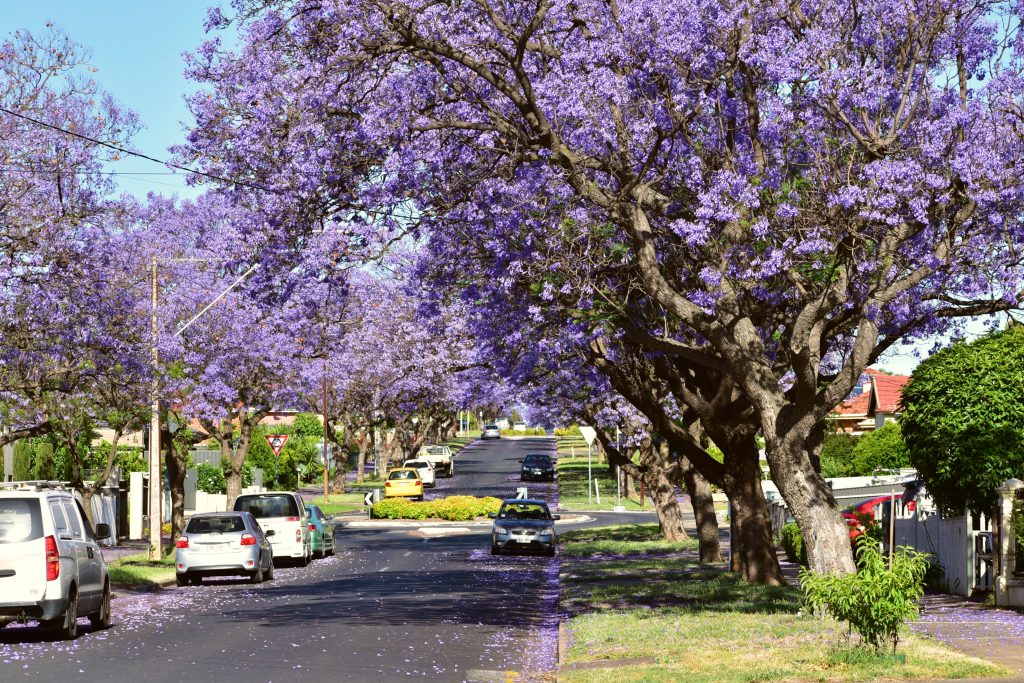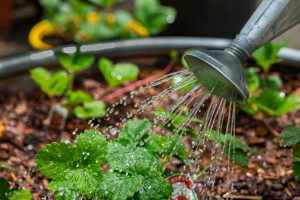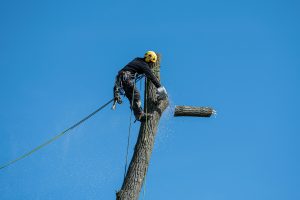
Jacaranda Health and Maintenance
There is no doubt the jacaranda tree is an iconic part of the Brisbane landscape, with its distinctive purple flowers it is loved by many.
Did you know though, that Jacaranda trees are not native to Australia? They’re actually an invasive species that outcompetes native tree and plant species for resources and can even damage roads and fences with their extensive roots. This is why you’ll often see nothing else growing beneath a Jacaranda.
Although Jacarandas are originally from Central and South America, these beauties have been part of Brisbane since 1864, and most of the Jacarandas around the city are descendants of the very first tree planted here. They used to be widely cultivated but as they’re invasive, I don’t suggest planting them at all.
These deciduous trees provide great shade with their broad canopies, usually growing between 7 to 17 metres tall, though some varieties can get even taller. You can expect those gorgeous flowers to bloom from spring to early summer, and they’re a favourite among bees and garden lovers alike.
Despite not being able to plant them, you can appreciate the ones that already exist and help with their maintenance and upkeep.
Location
Jacarandas love their space and sunshine, but their root systems are extensive so be sure not to build anything too close to a Jacaranda tree. They need plenty of room to spread out and soak up the sun for the best blooms. Some say that if Jacarandas don’t get at least six hours of sunlight daily, they won’t be happy!
Food and Water
Established Jacarandas don’t need regular watering as they are pretty drought tolerant. They, like any other trees, need fertiliser often enough to stay big and strong.
Pruning
Jacarandas like to be pampered in late winter, so that’s a good time to remove dead wood, and branches, or shape them if you’d like. Just keep in mind that if you prune too much, they might not bloom as beautifully as they could, so it’s best to be cautious!
Soil
Jacarandas like well-drained, loamy or sandy soil with a slightly acidic pH level. Don’t let the soil they’re in become overly wet or often waterlogged.
Large Jacaranda trees must be ring-barked or cut down below ground level and any regrowth treated with herbicide in order to control their spread across Brisbane.
The Jacaranda tree, thanks to its size, has heavy branches that can become a bit risky if not properly maintained. They tend to split at bark inclusions, which can be problematic for anything nearby if those branches aren’t cut back to relieve some pressure. It’s a good idea to call in an arborist to handle the higher, thicker branches and any dead wood on your Jacaranda as those heavy branches can break off in storms.
If you have any questions about your Jacaranda tree, feel free to give our Ecological Tree Services office a call on 07 3520 8661.



